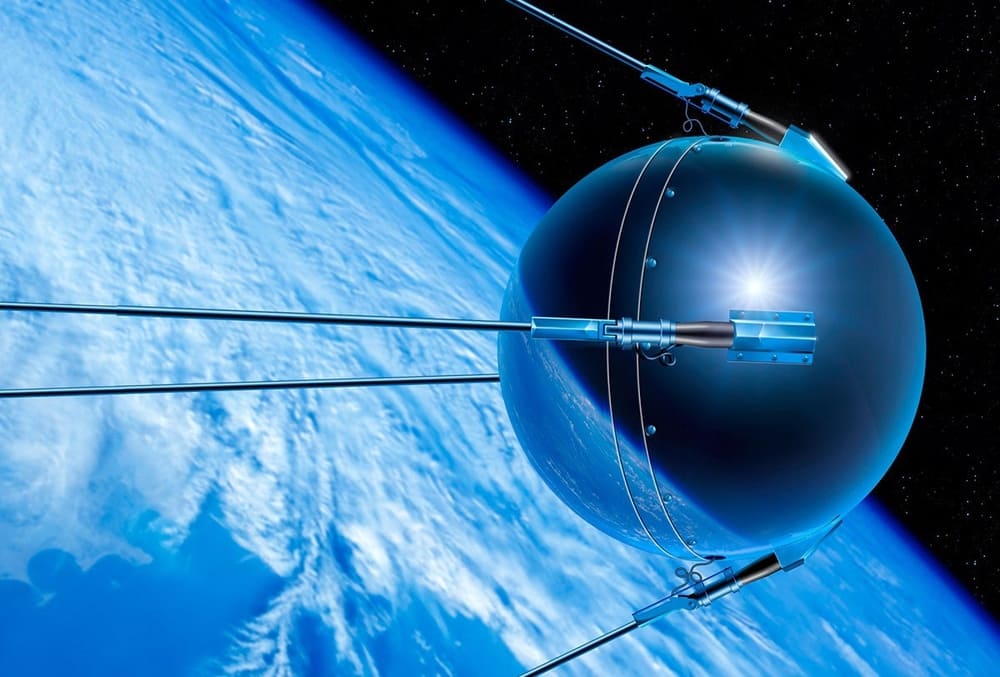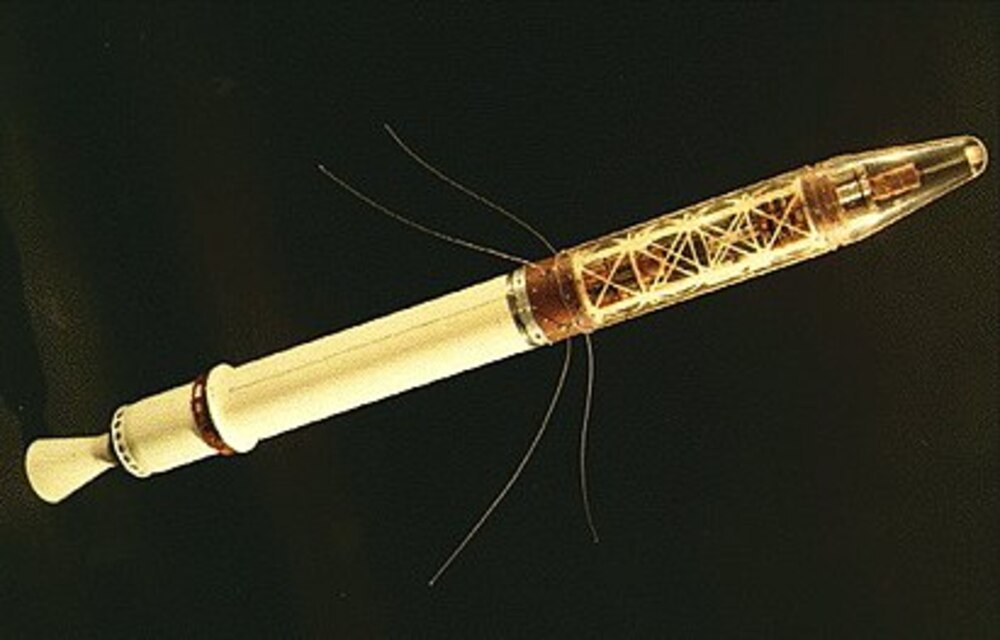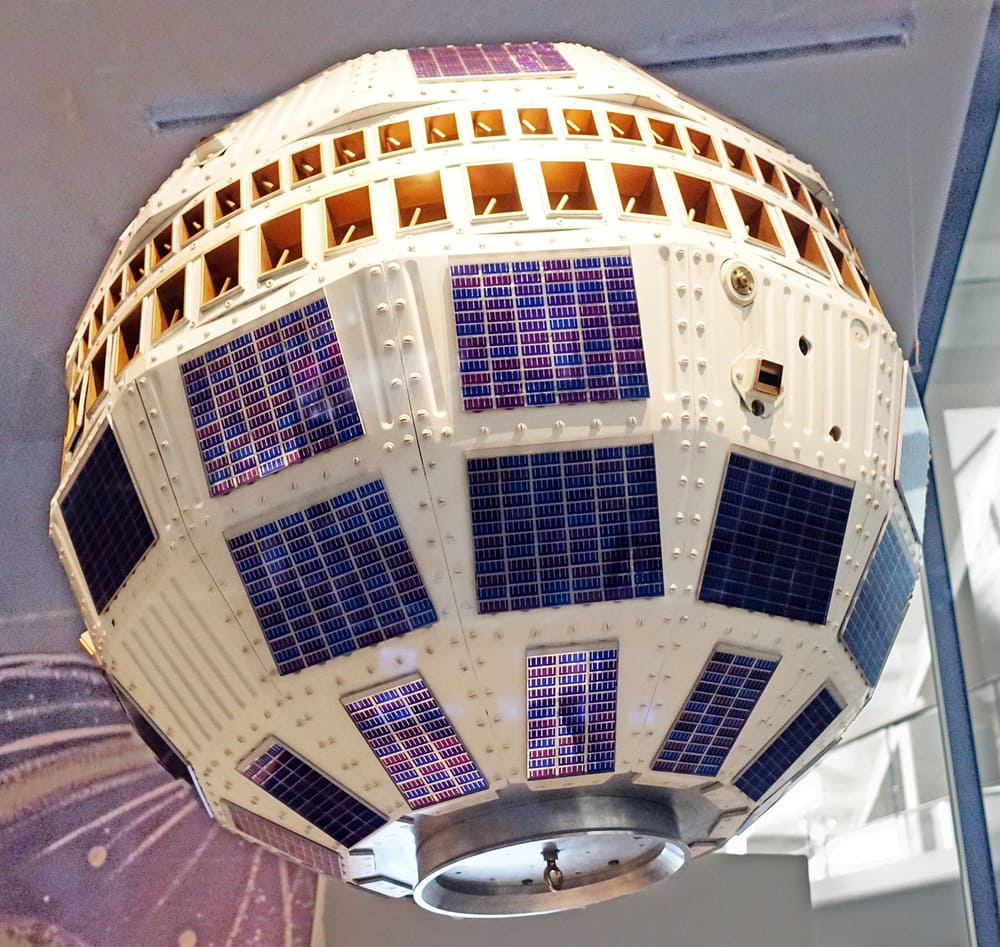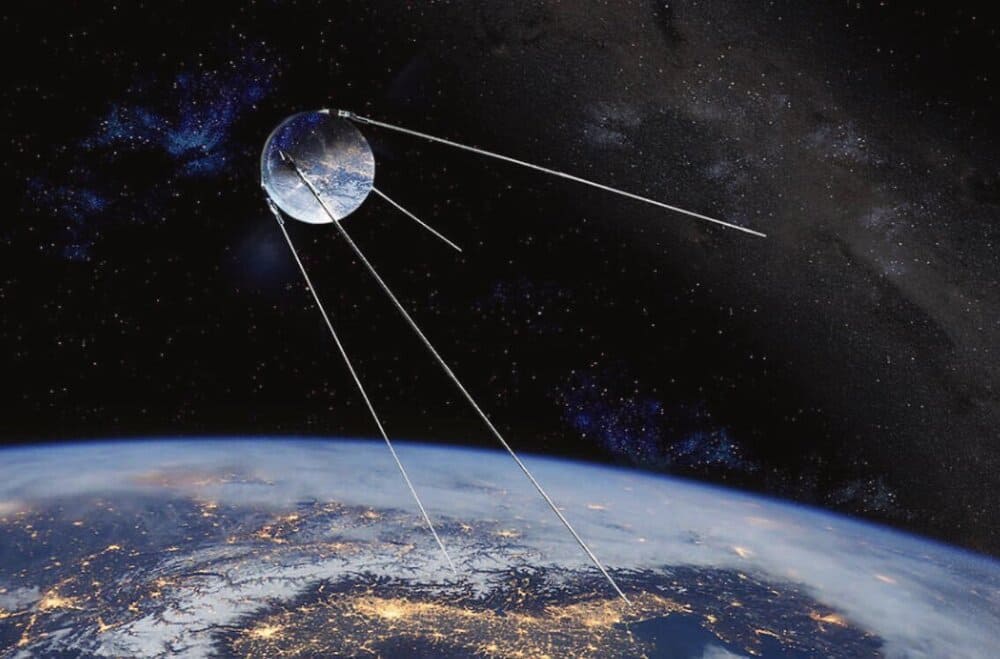The concept of artificial satellites has roots in early scientific and fictional works. In 1869, Edward Everett Hale wrote “The Brick Moon,” a story about an artificial satellite. Later, in 1903, Konstantin Tsiolkovsky, a Russian scientist, published “The Exploration of Cosmic Space by Means of Reaction Devices,” laying the theoretical groundwork for space travel and artificial satellites. Tsiolkovsky’s equations for rocketry became fundamental in astronautics.
The dawn of the space age
The actualization of artificial satellites began in the mid-20th century. The first artificial satellite, Sputnik 1, was launched by the Soviet Union on October 4, 1957. This marked the beginning of the Space Age and the Space Race between the United States and the Soviet Union. Sputnik 1, a 58 cm diameter metal sphere with four external radio antennas, transmitted radio pulses detectable on Earth, demonstrating the feasibility of artificial satellites.

Shortly after, the United States launched its first satellite, Explorer 1, on January 31, 1958. This satellite discovered the Van Allen radiation belts, showcasing the scientific potential of satellites.

Advancements in satellite technology
The 1960s and 1970s saw significant advancements in satellite technology. Satellites like Telstar 1 (1962) facilitated the first transatlantic television broadcasts, while Syncom 3 (1964) provided live coverage of the Tokyo Olympics, demonstrating the potential for global communication.

In 1964, the Intelsat I (Early Bird) satellite was launched, initiating the first commercial communications satellite system. This era also saw the development of weather satellites, with TIROS-1 (1960) being the first successful weather satellite, revolutionizing meteorology by providing continuous weather monitoring from space.
Navigational and Earth observation satellites
The development of the Global Positioning System (GPS) began in the 1970s and became fully operational in the 1990s. This network of satellites provided precise geolocation capabilities, revolutionizing navigation for both military and civilian applications.
Earth observation satellites, such as the Landsat program initiated in 1972, provided detailed imagery of the Earth’s surface, enabling advancements in environmental monitoring, agriculture, and urban planning.
Modern satellites and constellations
The 21st century has witnessed the proliferation of satellite constellations. Companies like SpaceX, with its Starlink project, aim to deploy thousands of small satellites to provide global internet coverage. This era also emphasizes miniaturization and cost reduction, with the development of CubeSats, small satellites that can be launched in large numbers for scientific and commercial purposes.
Advancements in technology have enabled more sophisticated and multifunctional satellites. Modern satellites are equipped with advanced sensors and communication equipment, providing high-resolution imagery, climate data, and secure military communications.
The future of artificial satellites
The future of artificial satellites is poised to be driven by further technological advancements and increased commercial involvement. Innovations in propulsion, materials science, and artificial intelligence are expected to enhance satellite capabilities. Mega-constellations, consisting of thousands of small satellites, are set to become more common, providing comprehensive global coverage for communication and observation.
The increasing role of private companies in satellite launches and operations is democratizing access to space. This trend is likely to accelerate the pace of innovation and reduce costs, making space-based services more accessible to a wider range of users.
From the historic launch of Sputnik 1 to the cutting-edge mega-constellations of today, artificial satellites have undergone profound evolution. They have transformed communication, navigation, weather forecasting, and our understanding of Earth and space. As technology continues to advance, the role of artificial satellites in our daily lives and in scientific exploration will only grow, heralding a new era of space-based innovation and discovery.


